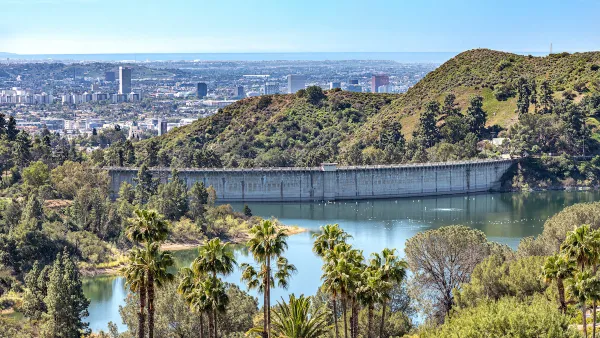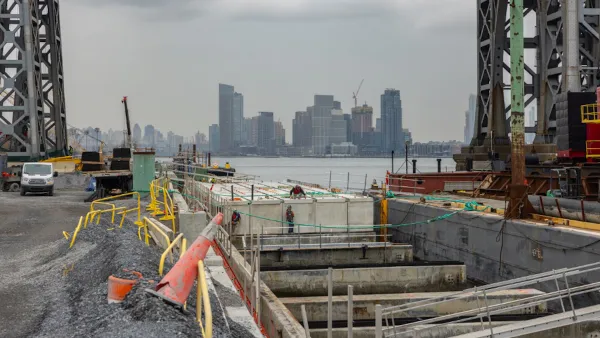How the city is taking action on green infrastructure and stormwater projects to protect neighborhoods from the rising risk of catastrophic flooding.

Linda Poon describes New York City’s efforts to plan for a more resilient future in the face of recurring floods. “[Hurricane Ida in 2021] and the ones before it, including a cloudburst downpour during Tropical Storm Elsa in July, have forced New York to take a hard look at becoming a ‘spongier’ city — one that combines nature-based green infrastructure like street-side rain gardens with gray infrastructure like storm drains to divert or absorb water and prevent catastrophic flooding.”
“A recent Arup report comparing the ‘sponginess’ of seven global cities ranked New York in the middle of the pack, after Auckland and Nairobi, and tied with Mumbai and Singapore. The researchers combined satellite imagery showing land use in the 58 square miles of each city’s main urban center with data from a global soil permeability analysis, and applied machine learning to determine their ability to manage sudden soakings.” According to the report, “Some 39% of the city is considered green spaces, leaving a bit less than two-thirds of the urban environment covered in impermeable surfaces.”
The article describes the challenges faced by the city in flood-proofing many of its neighborhoods and the limited potential for overhauling the city’s massive system of stormwater infrastructure. “In the more immediate term, the city is moving ahead with green infrastructure projects that can mitigate the most destructive kinds of flooding and help the city live with water from intense downpours.” Poon writes, “New York’s green infrastructure program was first laid out in 2010, and the city has since poured $1 billion into it. It’s become one of the nation’s largest, with more than 11,000 projects across all five boroughs that are either completed or under construction.”
FULL STORY: How New York City Plans to Soak Up the Rain

National Parks Layoffs Will Cause Communities to Lose Billions
Thousands of essential park workers were laid off this week, just before the busy spring break season.

Retro-silient?: America’s First “Eco-burb,” The Woodlands Turns 50
A master-planned community north of Houston offers lessons on green infrastructure and resilient design, but falls short of its founder’s lofty affordability and walkability goals.

Delivering for America Plan Will Downgrade Mail Service in at Least 49.5 Percent of Zip Codes
Republican and Democrat lawmakers criticize the plan for its disproportionate negative impact on rural communities.

Test News Post 1
This is a summary

Test News Headline 46
Test for the image on the front page.

Balancing Bombs and Butterflies: How the National Guard Protects a Rare Species
The National Guard at Fort Indiantown Gap uses GIS technology and land management strategies to balance military training with conservation efforts, ensuring the survival of the rare eastern regal fritillary butterfly.
Urban Design for Planners 1: Software Tools
This six-course series explores essential urban design concepts using open source software and equips planners with the tools they need to participate fully in the urban design process.
Planning for Universal Design
Learn the tools for implementing Universal Design in planning regulations.
EMC Planning Group, Inc.
Planetizen
Planetizen
Mpact (formerly Rail~Volution)
Great Falls Development Authority, Inc.
HUDs Office of Policy Development and Research
NYU Wagner Graduate School of Public Service





























